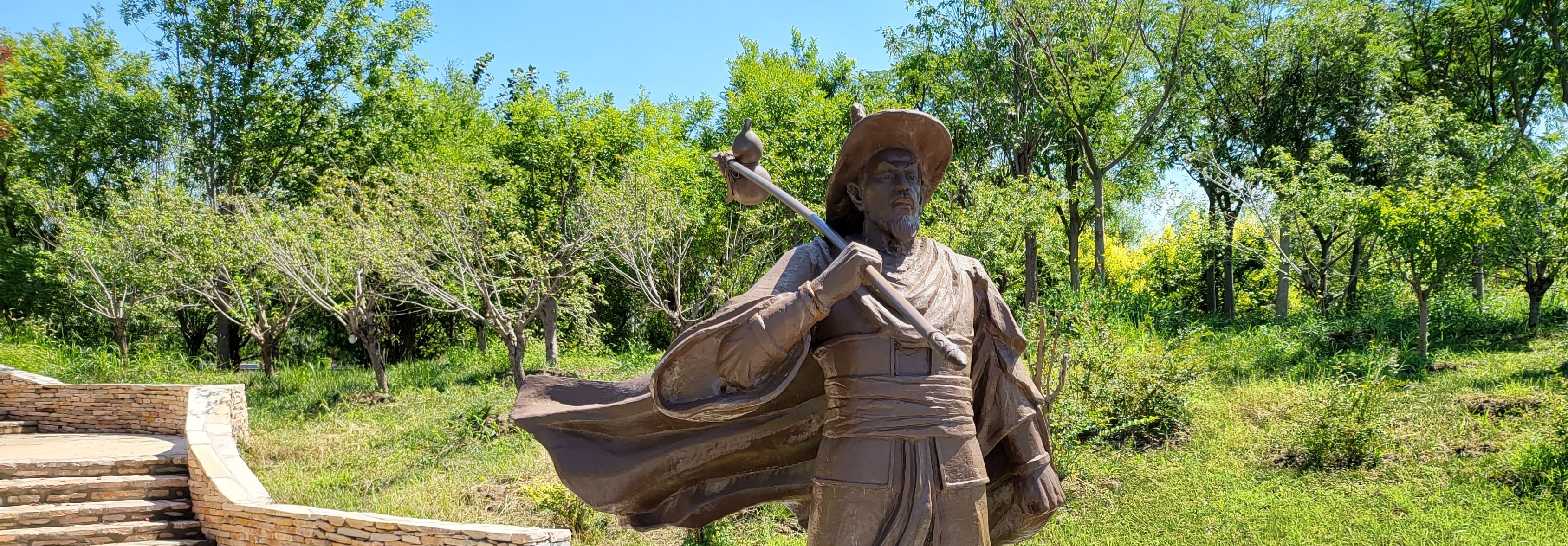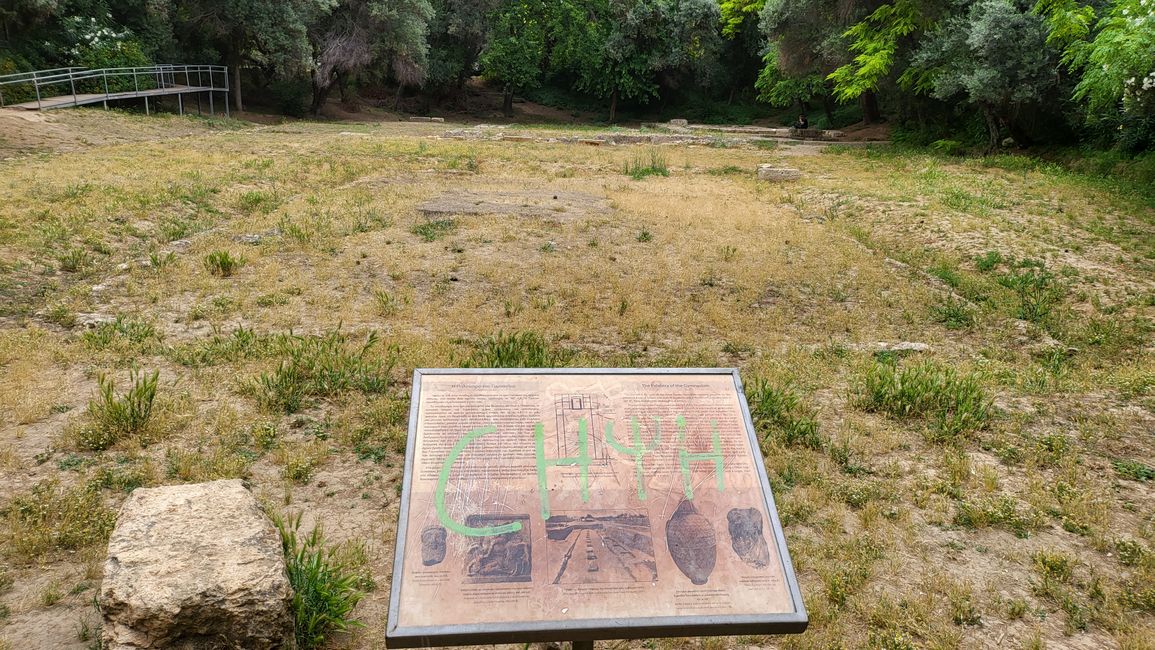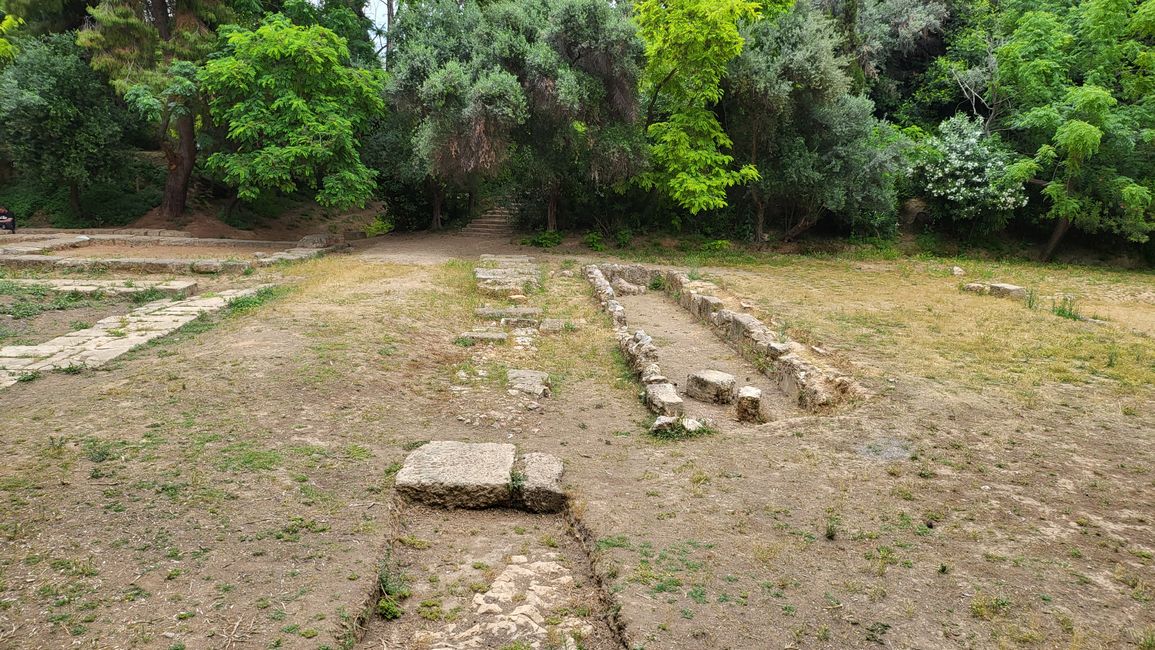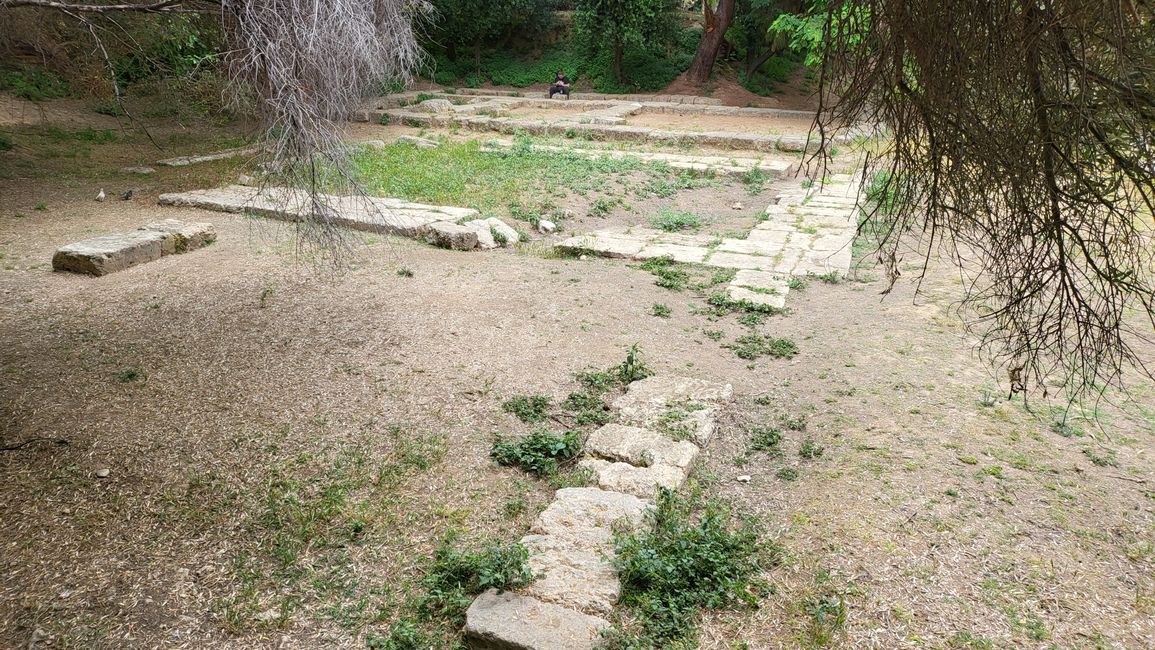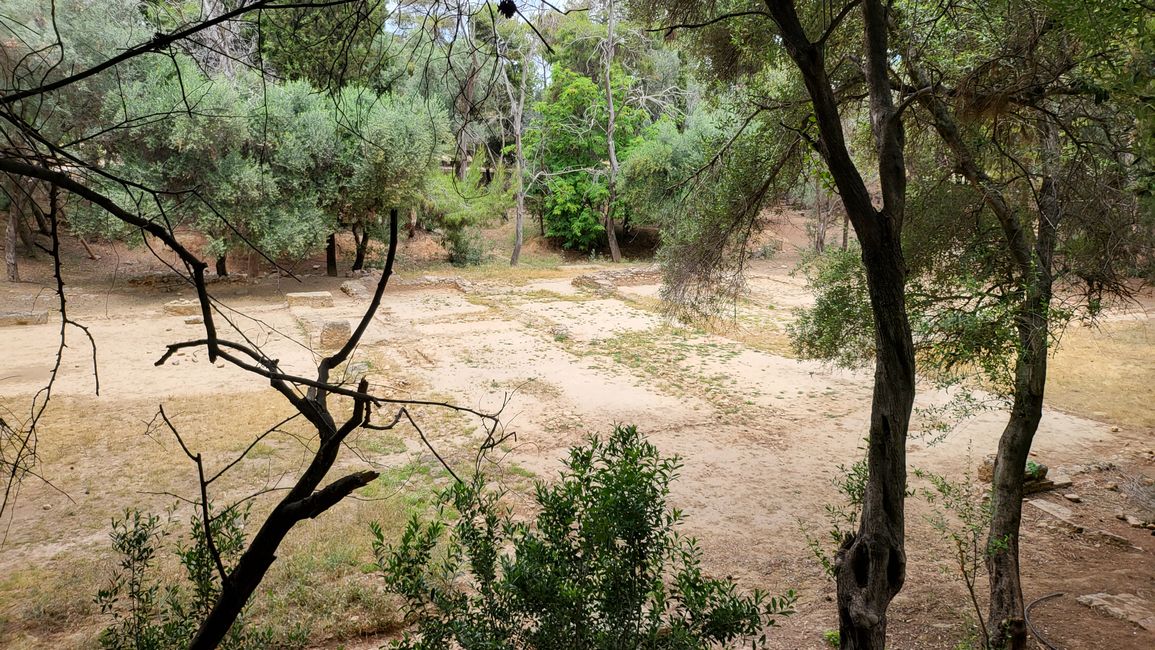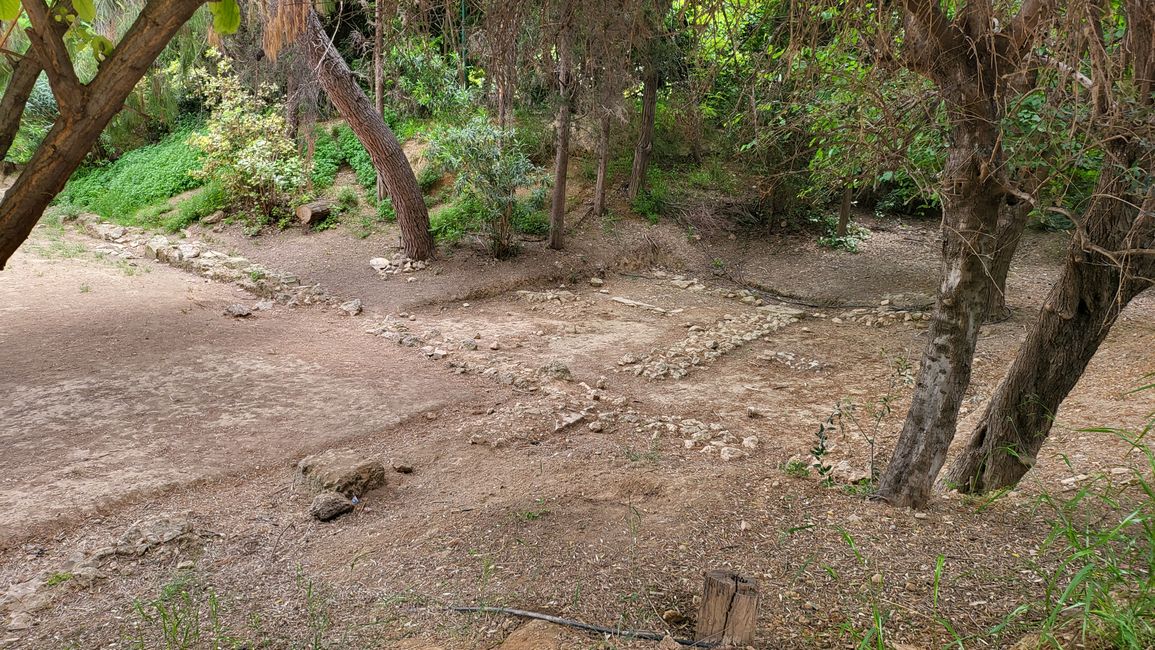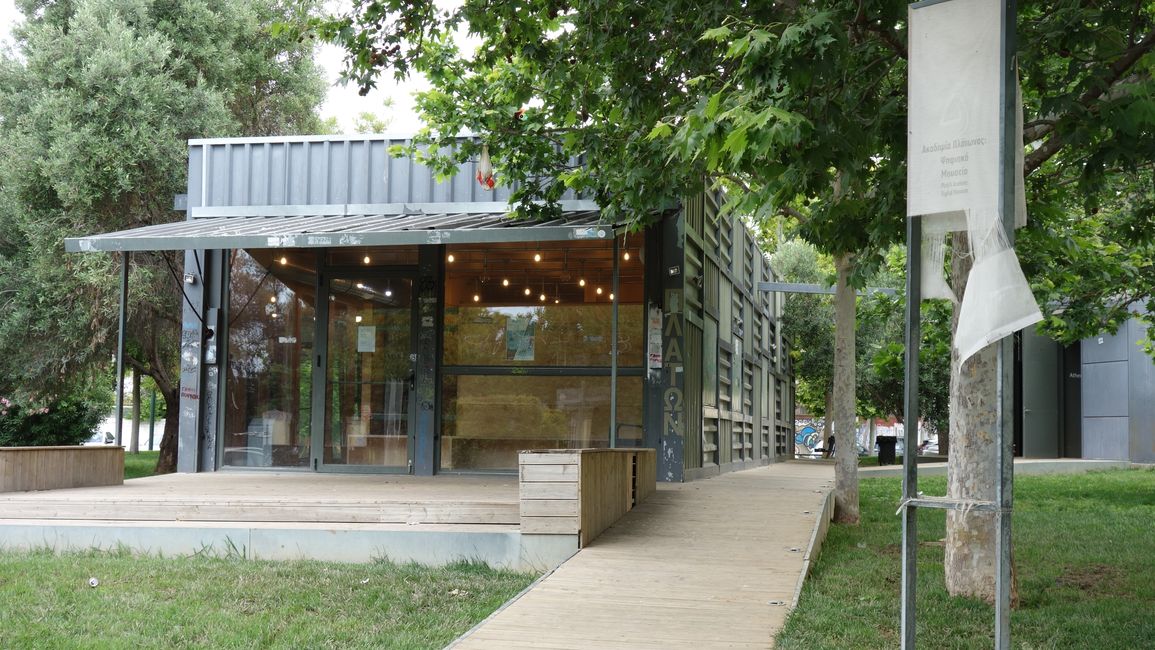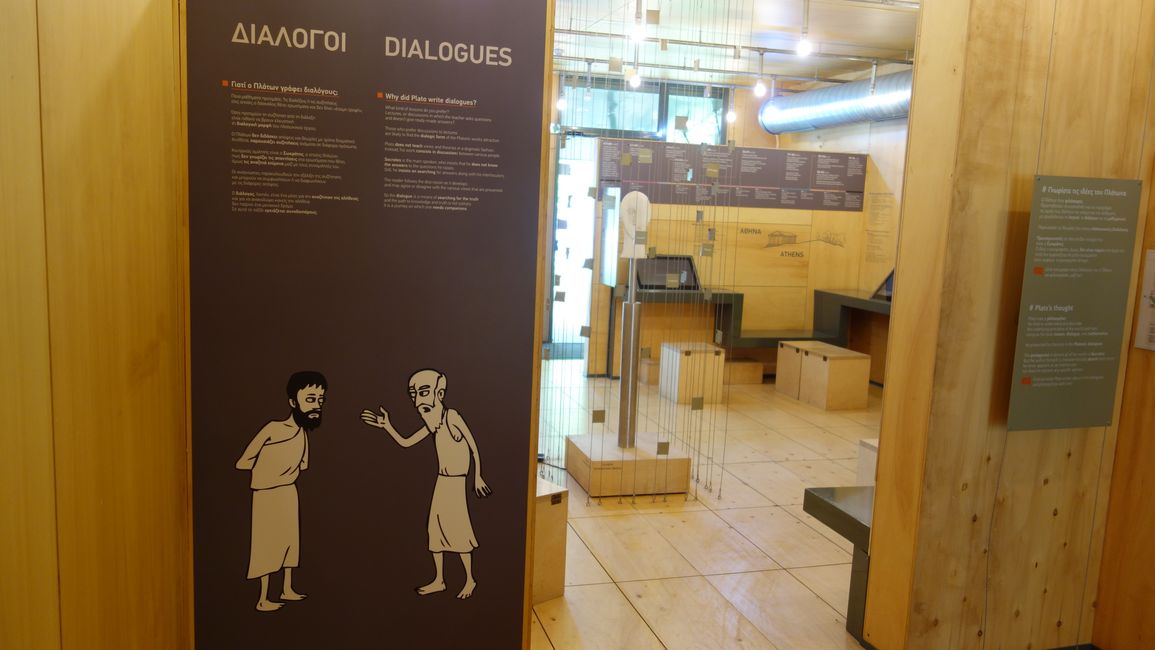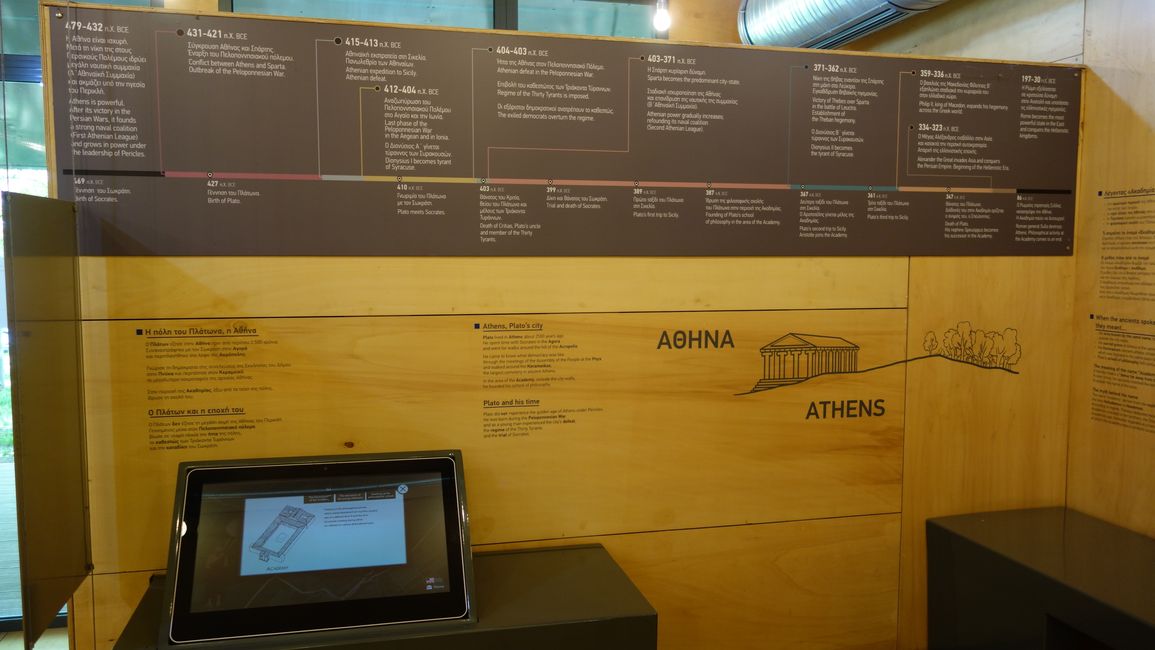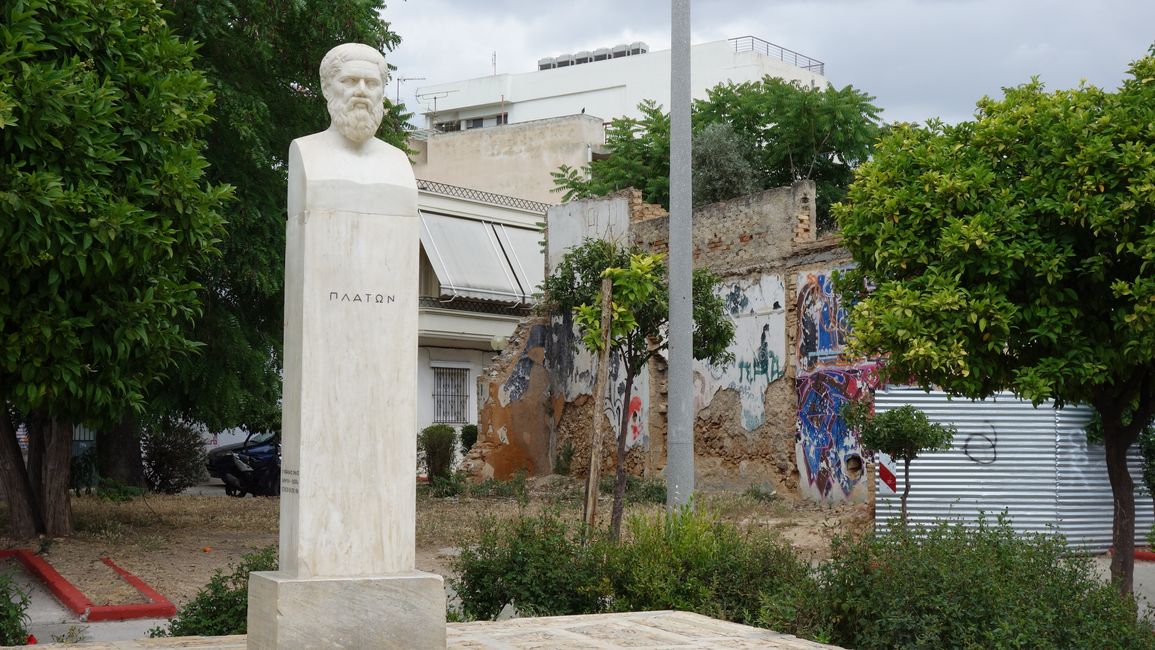Plato’s Academy
Byatangajwe: 11.08.2024
The site of the former Academy of Plato in Athens is quite disappointing. While the foundations of the ruins are exposed, they are poorly marked. Some foundations have no signs at all, and the walls are overgrown with vegetation. The only information board is covered in graffiti. During my visit, a reckless park visitor even held a picnic on the historic wall. The digital museum located on the other side of the park reflects a similar state of neglect. Opened only in 2015, the container building is already covered in graffiti, the large windows are scratched, and the entrance sign is torn. At first, I assumed it was closed, and that’s why the vandalism was visible. But after walking to the other side of the building, one can spot the entrance. Inside, things continue poorly: Some monitors in the digital museum display error messages, some applications are very trivial, fallen letters on information boards have not been replaced, and the video presentations are poorly produced. In the 'video cave' designed to illustrate the allegory of the cave, junk and a refrigerator are placed in the corner, and the two projectors are not properly aligned, making the video’s seam visible in the middle of the screen and causing letters to appear doubled and misplaced.
In the park surrounding the digital museum, there is also a bust of Plato, which, due to the graffiti background, is not suitable for taking nice photos.
The overall presentation of Plato’s Academy is a sad spectacle that does not do justice to the significance and achievements of the famous philosopher. It reflects the intellectual decline of Greek and European society very well.
A good tip, however, is the nearby restaurant “Πλάτων καφεμεζεδοπωλείον” (Platon Cafe and Restaurant, Tripoleos 61). Besides unique decor, it offers very delicious local dishes at very affordable prices and a local audience for free.
Igisubizo
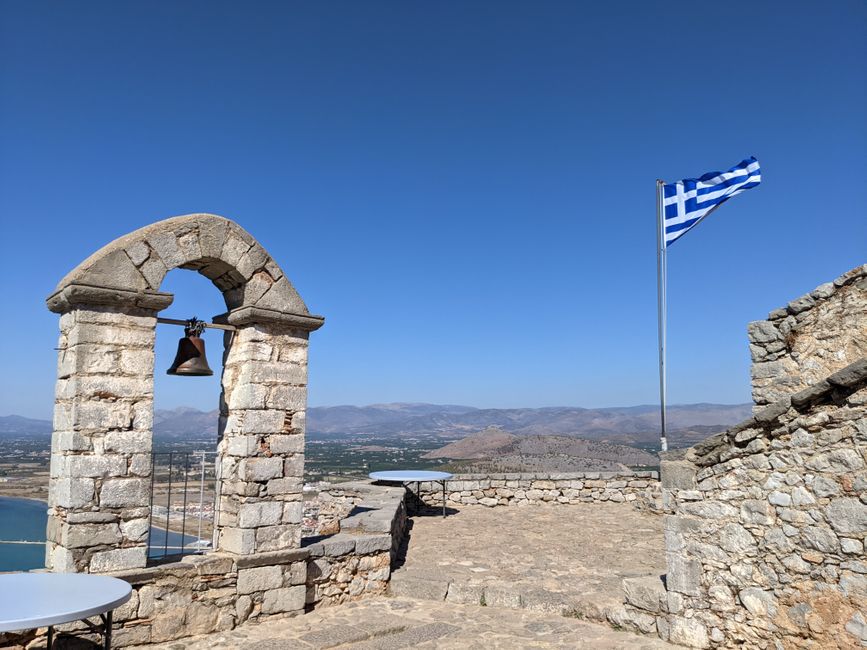
Raporo yingendo Ubugereki
